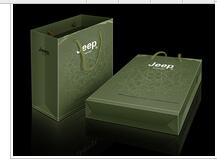图片扫描后,应尽量在RGB模式中做色彩的校正,然后在CMYK模式中做细微调节。因为RGM模式的色域范围比CMYK模式的色域范围广,在RGB模式中做大的校正时不会损失太多层次和细节。
After scanning the image, color correction should be done as much as possible in RGB mode, and then fine adjustments should be made in CMYK mode. Because the color gamut range of the RGM mode is wider than that of the CMYK mode, making large corrections in the RGB mode will not lose too many layers and details.
因为在扫描的过程中会平滑原稿的某些鲜锐的边缘,为了使印刷图像具有清晰的色调和细节,在对图像进行完色彩校正后用USM来进行锐化,这样会使图像具有更为丰富的层次。
Because some sharp edges of the original manuscript are smoothed during the scanning process, in order to make the printed image have clear tones and details, USM is used to sharpen the image after color correction, which will make the image more rich in layers.
如果要放大图像,应该尽量在Photo-shop中放大,而避免在排版软件中随意放大图像。在排版软件中放大图像只会扩大像素而降低图像质量。
If you want to enlarge an image, you should try to enlarge it in Photoshop and avoid randomly enlarging the image in typesetting software. Enlarging an image in typesetting software only increases pixels and reduces image quality.
以灰平衡来校正图像时,应以青为参考,青的值要大于其它两色,其它两色的值大致相当,得到的灰平衡的值与青相等。

When using gray balance to correct an image, the reference should be cyan. The value of cyan should be greater than the other two colors, and the values of the other two colors are roughly equivalent. The resulting gray balance value is equal to cyan.
由于Curves工具比Levels工具控制色彩的能力更强,所以应多用Curves工具进行色彩校正。
Due to the stronger ability of the Curves tool to control colors than the Levels tool, it is recommended to use the Curves tool more for color correction.
在处理图片时以Info面板显示的值为准,参考屏幕上显示的图像来判断各区域中的C、M、Y、K是否偏色,高光及暗调区域是否在印刷范围内,太亮的高光和太暗的暗调都不适合在印刷机上印刷。
When processing images, the values displayed on the Info panel should be used as the reference, and the images displayed on the screen should be used to determine whether the C, M, Y, and K in each area are out of color. High light and dark areas should be within the printing range, and too bright high light and too dark dark tones are not suitable for printing on the printing machine.
图像的一些处理可以单通道进行,如印刷品原稿扫描后,一般Y或C通道的质量较差,尤其Y通道往往网点很明显,可以单独处理;对于原稿是未套准的印刷品,可略微Move其未套准的颜色通道,效果不错。另外,K通道的单独修饰对图片的质量较为重要,对质量较差的原稿,往往需要打开K通道观察、修饰。
Some image processing can be carried out through a single channel, such as after scanning the printed manuscript, the quality of the Y or C channel is generally poor, especially the Y channel often has obvious dots and can be processed separately; For printed materials with uncorrected originals, you can slightly move their uncorrected color channels to achieve good results. In addition, the individual modification of the K channel is important for the quality of the image. For manuscripts with poor quality, it is often necessary to open the K channel for observation and modification.
按常见新闻图片内容区分,一些处理方式和大致数据:
Distinguish by common news image content, some processing methods and approximate data:
人物:图片中若人物面部所占比例较大,扫描时可以用skintone,处理时注意保证中间调的层次丰富一些。人物脸部处理中皮肤调的大致标准(只符合本报):一般来说,C和K的值为零;亮部Y和M保持在10%以下,暗部保持在40%以下,一般黄种人的Y可多些,脸部呈黄色,白种人的M可多些,脸部成粉色。
Character: If the proportion of the character's face in the image is relatively large, skintone can be used during scanning, and attention should be paid to ensuring that the middle tone has a richer level during processing. The approximate standard for skin tone in facial processing of characters (only in line with this report): Generally speaking, the values of C and K are zero; Keep the bright parts Y and M below 10%, and the dark parts below 40%. Generally, yellow people may have more Y, and their faces may be yellow, while white people may have more M, and their faces may be pink.
风景:可适当拉长中间调以拉开层次,增加画面的距离感,curve曲线微呈S形,色饱和度相对高一些。
Landscape: The middle tone can be appropriately lengthened to widen the hierarchy, increasing the sense of distance in the image. The curve curve is slightly S-shaped, and the color saturation is relatively high.
器物:尽量保证其细部的层次,对于如金属类器具可锐化得大一些,以体现其质感。
Utensils: Try to ensure the level of detail, and for metal tools, sharpen them larger to reflect their texture.
夜间景物:尽量照顾大面积的中、暗调内有层次,而不是死黑一块,尤其注意不要因墨过多发生堆墨现象。夜间图片尤其是照片偏红现象突出,暗调偏红一定要减掉,否则图片发灰。
Nighttime scenery: Try to take care of large areas of medium and dark tones with layers, rather than dead black patches, and be particularly careful not to pile up ink due to excessive ink. The phenomenon of redness in nighttime images, especially in photos, is prominent. The dark tone and redness must be reduced, otherwise the image will become gray.
